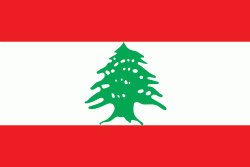Hermel (El Hermel)
Hermel (الهرمل) is a town in Baalbek-Hermel Governorate, Lebanon. It is the capital of Hermel District. Hermel is home to a Lebanese Red Cross First Aid Center. Hermel's inhabitants are predominantly Shia Muslims.
There is an ancient pyramid known as Kamouh el Hermel (Pyramid or Needle of Hermel) located about 6 km south of the town that is a popular attraction for local tourists.
In 1519 and 1545, the town was under the administration of the nahiyah ("subdistrict") of Manasef, and tax records indicate it had 50 households, all Muslims. The town's population swelled after the Hamade family and their associated Shia clans left Mount Lebanon to settle in Hermel and its surroundings, which were already part of the Hamade's tax-concessions since 1668.
There is an ancient pyramid known as Kamouh el Hermel (Pyramid or Needle of Hermel) located about 6 km south of the town that is a popular attraction for local tourists.
In 1519 and 1545, the town was under the administration of the nahiyah ("subdistrict") of Manasef, and tax records indicate it had 50 households, all Muslims. The town's population swelled after the Hamade family and their associated Shia clans left Mount Lebanon to settle in Hermel and its surroundings, which were already part of the Hamade's tax-concessions since 1668.
Map - Hermel (El Hermel)
Map
Country - Lebanon
 |
 |
| Flag of Lebanon | |
The earliest evidence of civilization in Lebanon dates back to 5,000 BCE. From c. 3200–539 BC, it was home to the flourishing Phoenician civilization before being annexed by various Near Eastern empires. In 64 BC, the Roman Empire conquered the region, and the region became a major center for Christianity under the Byzantine Empire. In the 7th century, the Muslim conquest of the Levant established caliphal rule. The 11th century saw the start of the Crusades and the establishment of Crusader States in the region only for it to be later reclaimed by the Ayyubids and Mamluks before being ceded to the Ottoman Empire in the 16th century. Under Sultan Abdulmejid I, the first Lebanese protostate took form in the 19th century as the Mount Lebanon Mutasarrifate, created as a home for the Maronite Christians under the Tanzimat reforms.
Currency / Language
| ISO | Currency | Symbol | Significant figures |
|---|---|---|---|
| LBP | Lebanese pound | لل | 2 |
| ISO | Language |
|---|---|
| AR | Arabic language |
| HY | Armenian language |
| EN | English language |
| FR | French language |















